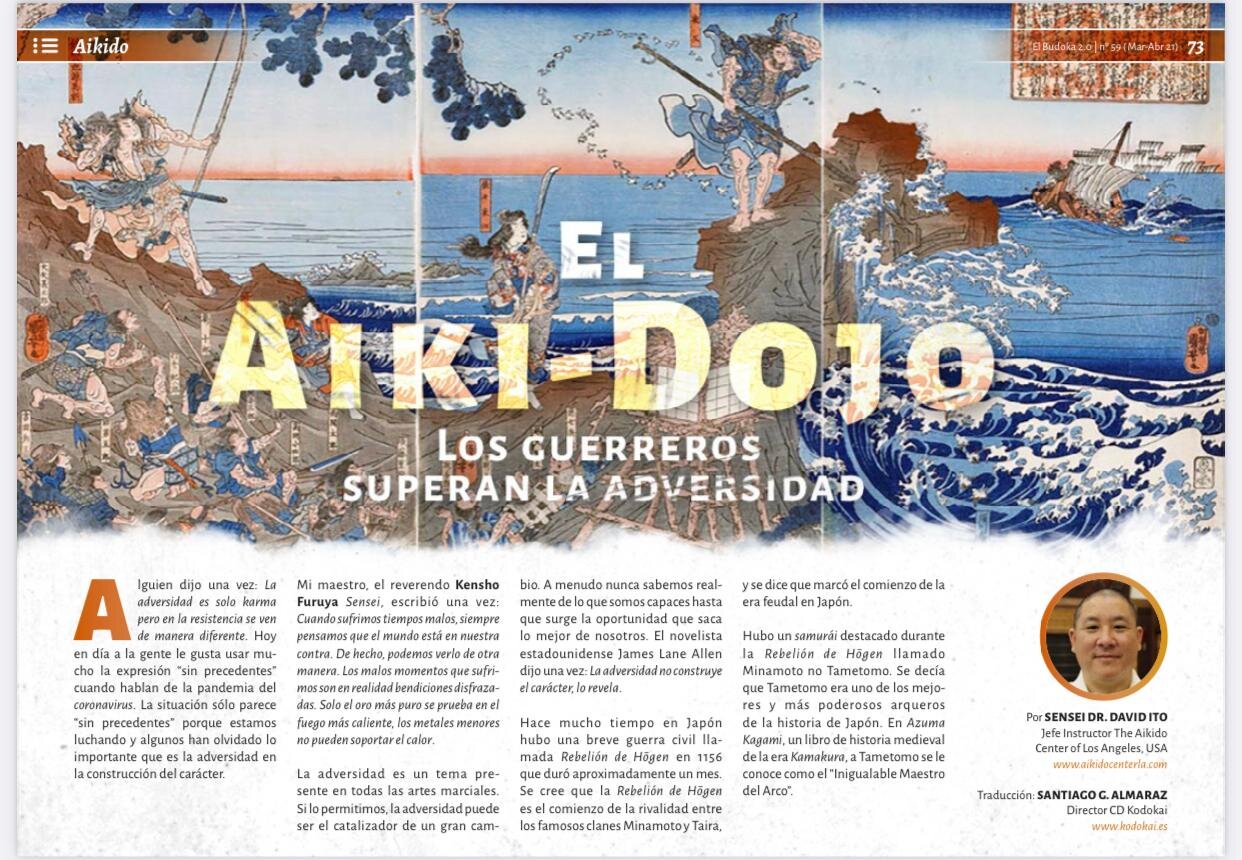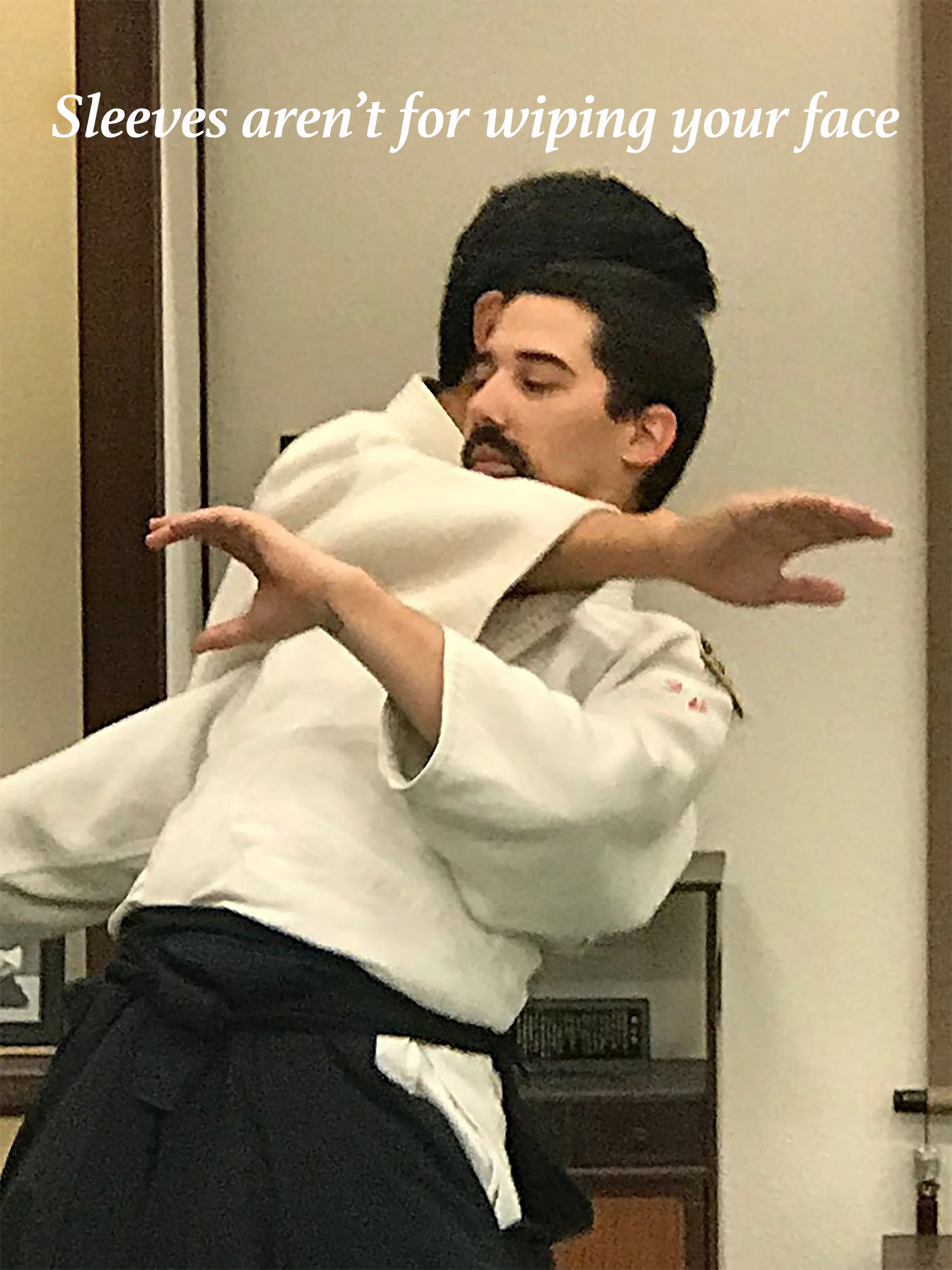Here is the English version of the article that I wrote for the Spanish Language magazine El Budoka.
Warriors Overcome Adversity
Someone once said, “Adversity is only karma and resistance seen differently.” People today like to use the word “unprecedented” a lot when they talk about the coronavirus pandemic. The situation only seems “unprecedented” because we are struggling and some have forgotten how important adversity is in the building of one’s character.
My teacher, Rev. Kensho Furuya Sensei once wrote, “When we suffer bad times, we always think that the world is against us. Actually, we can look at it in another way. The bad times that we suffer are actually blessings in disguise. Only the purest gold is tested in the hottest fire, lesser metals cannot take the heat.”
Adversity is a theme in every martial art. If we allow it, adversity can be the catalyst for great change. Oftentimes, we never really know what we are capable of until the opportunity arises which brings out the best in us. American novelist James Lane Allen once said, “Adversity does not build character, it reveals it.”
Long ago in Japan there was a short civil war called the Hogen Rebellion in 1156 which lasted about a month. The Hogen Rebellion is thought to be the beginning of the rivalry between the famous Minamoto and Taira clans and was said to have ushered in the Feudal era in Japan.
There was one standout samurai during the Hogen Rebellion named Minamoto no Tametomo. Tametomo was said to be one of the best and most powerful archers in the history of Japan. In the Azuma Kagami, a medieval history book from the Kamakura era, Tametomo is referred to as the “Peerless Master of the Bow.” Tametomo is often depicted using a bow that is eight feet six inches long with a five foot long bow string. A bow of that size with such a tight drawstring would likely take three men to draw and would be impossible for a single man to handle. Tametomo’s prowess with a bow is legendary. During the Hogen Rebellion he was charged with guarding the West gate of his master’s castle. His brother Yoshitomo was part of the opposition force and was poised to attack across the castle’s moat. With one arrow, Tametomo hit a silver ornament off his brother’s helmet while he and the other general’s were strategizing their attack. During that same conflict Tametomo also was reported to have killed two generals with one single arrow. However, Tametomo’s most celebrated battlefield accomplishment, which became a legend, was that he sank an enemy’s ship with just a single well placed arrow that punctured the hull of the ship just below the waterline.
However, Minamoto no Tametomo didn’t start out as a great archer. Tametomo was a descendant of Emperor Seiwa and was born into the Minamoto clan which was one of the great samurai families of the Feudal era. After the Hogen Rebellion, his brother, Minamoto no Tameyoshi went on to become the first Shogun. With such an auspicious family tree, one might think that things would come easy to Tametomo. On the contrary, Tametomo was shunned because he was born with a genetic defect. Tametomo’s arms were not the same size or length. Any birth defect was frowned upon in those days and to make matters worse, his father disowned him at age 13. Despite being a weak child, Tametomo grew to be about seven feet tall and was large in stature. When Tametomo was an adult, his left arm was four to five inches longer and slimmer compared to his right arm which was shorter and considerably muscular. Throughout his entire life, Tametomo’s family thought that he would never amount to anything and would always be a disappointment.
The problem with having irregular arms is that the sword is the weapon of the samurai. Being born into a samurai family with that specific birth defect was like being given a death sentence because he would be a liability on the battlefield. However, this is not the way Tametomo looked at it. It is not clear who Tametomo learned archery from. All that is written is that he was a great archer. Understanding archery, the bow is held with the left arm and drawn with the right. Thus, anyone with Tametomo’s specific defect would be perfect as an archer. Tametomo could have hid himself and let his birth defect and childhood difficulties make him feel self-conscious. However, as the legend clearly shows us, Tametomo used his adversity to his advantage to make himself great.
When things aren’t going our way, we tend to hyper focus on what is not going right rather than what we can fix. Focusing only on the negative can cause us to lose our center and inner balance or in a sense lose our minds to the situation. Ken Watanabe Sensei once said, “The martial arts are supposed to bring order to chaos.” What he means is that we are supposed to cultivate calmness within ourselves regardless of what is happening to us or around us. Truth be told, all adversities are either a test of our personal development or lesson that we need to learn. French novelist, Albert Camus said, “In the depth of winter, I finally learned that within me there lay an invincible summer.” These trials and tribulations give us an opportunity to show ourselves just how good we really can be.
Martial arts training is supposed to challenge us in the same way and prepare us for the hardships of daily life. Sometimes we are challenged by the technique while other times by the strength or speed of our partner. Regardless, the arduousness of training provides us with the opportunity to test our mettle, surmount challenges and grow. In battle and in life, some of us will sink while others will swim. No matter what we do in life, a little rain will fall and adversity will always be there in some way, shape or form but that struggle is what makes us stronger.
Dogen Zenji said, "The greater the aspiration, the greater the enlightenment.” Looking at Tametomo’s story it is clear that greatness comes from accepting the circumstances of the present and being resourceful enough to use whatever traits, skills or assets we do have in order to improve. Our mettle will always be tested and polished by hardship. Martial artists are people who rise to the challenge. We don’t know what heights this unprecedented time will take us to. All we do know is that its adversity is showing us the way and all we need to do is see it as such.
Don’t let the pandemic break you, use these unprecedented times to make you.





















